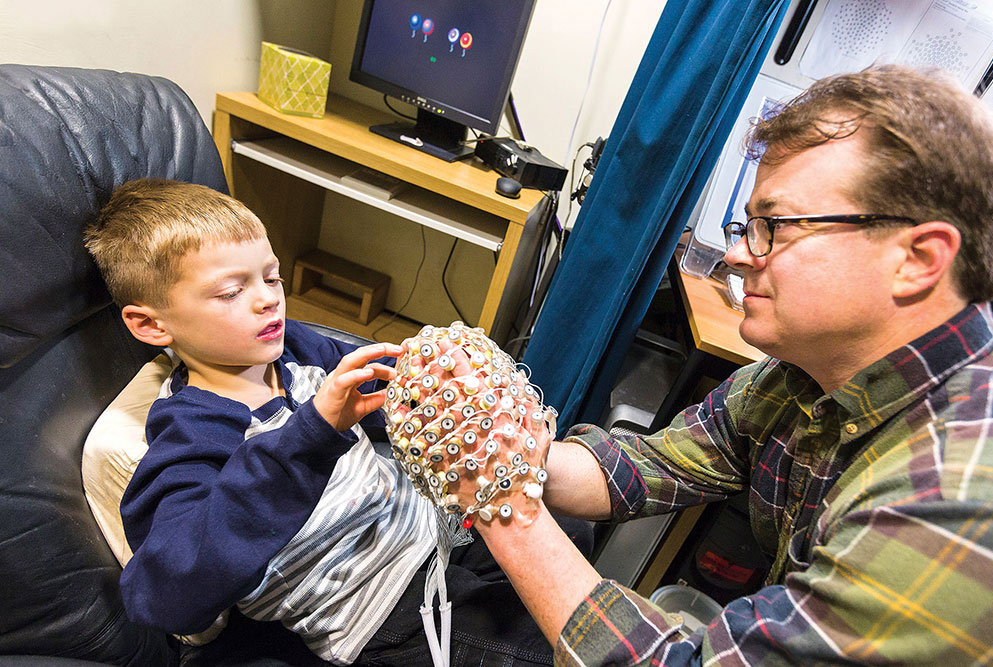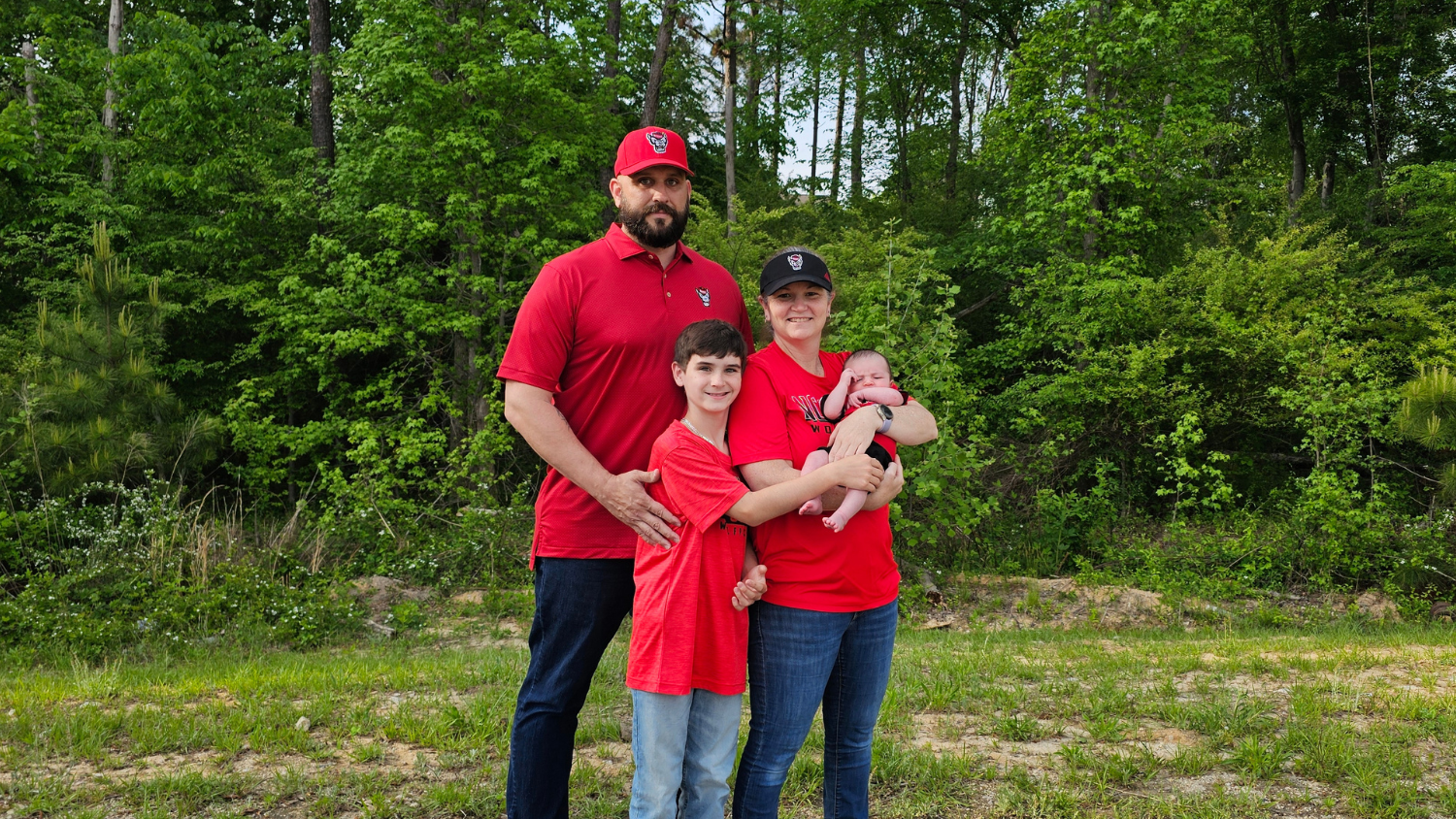Seeking Optimal Outcomes for Children with Autism


The brains of autistic girls appear to be wired more normally than those of autistic boys — and that can be both a blessing and a curse, according to Kevin Pelphrey (Psychology ’96), the Harris Professor at Yale University and director of Yale’s Center for Developmental Neuroscience.
Pelphrey is the principal investigator on a five-year, $15 million grant from the National Institutes of Health that is investigating why autism is more prevalent in boys than in girls. Officials say Pelphrey’s grant is one of the largest awards the NIH has ever given for autism research.
The Centers for Disease Control and Prevention estimates that autism is five times more common in boys, and Pelphrey and his collaborators want to know why.
They hope that understanding brain differences can help them craft treatments that are tailored better by gender and eventually for each individual child. The researchers are evaluating a group of 1,200 children through brain imaging, genetic testing and a series of clinical and behavioral tests.
The study has already yielded some significant findings related to what researchers call “camouflage” in autistic girls, says Pelphrey.
“It looks like the parts of girls’ brains that respond to social stimuli and understand other people are developed earlier and are more robust than boys,” says Pelphrey. “They are building up more of a capacity early on to interact socially, so they can look the same in a social situation, but it takes a great deal more effort.”
That means that autistic girls are more likely to be bullied and to suffer stress-induced illnesses, especially when they enter the adolescent years, where social skills become so important.
By contrast, boys are usually more severely impaired by their autism, but that may actually protect them socially, says Pelphrey.
“They don’t realize they are different, and it matters less to them in terms of their acceptance by the world and especially by potential friends,” he explains. “So if you’re a boy, you can carry quite a bit of social deficit and be treated fairly normally and fairly well. But if you’re a girl — especially in the teenage years — even a little bit of a social deficit is quite a disability. It’s very noticed and they can’t get away from it.”
Another concern about camouflage is that it could mean girls are being diagnosed with depression or other psychiatric disorders when they actually have autism, according to Pelphrey.
“If the actual brain differences between brains with autism and typically developing brains are different in boys and girls, that would lead to better treatment because they would be getting more appropriate treatment,” he says.
Family, career roots planted at NC State
Pelphrey readily admits that he was immature when he came to NC State. He started in the University Undesignated program, a precursor to the university’s First Year College, because he wasn’t ready to declare a major.
Several big things happened to him during his time as an undesignated student.
First, he met Barbara Soloman, who coordinated advising for the small, highly selective program. Pelphrey credits her with guiding him so he could sample different classes across the university but maintain a sense of direction.
“She was big on drawing connections between fields and showing us common themes,” says Pelphrey. “Most people found a major after the first year or so.”
It took Pelphrey two years to land on psychology — but that’s because he had an ulterior motive.
He had fallen in love.
Annie Chalmers (Business Management ‘95) was also in the undesignated program, but she was on the path to declaring a major in business finance. Pelphrey arranged to take some of the same classes, despite little interest in the subject.
Even though he got an F in one class, his gamble worked. The two eventually married and have five children in their blended family. Their daughter Frances, now 11, was diagnosed with autism at age four.
At the time, there were few treatments available for autistic children. Fortunately, Pelphrey was more equipped than many parents to understand the diagnosis, due in part to his former NC State faculty advisor and psychology professor Lynne Baker-Ward.
At Baker-Ward’s urging, Pelphrey went on to receive his Ph.D. in psychology at the University of North Carolina at Chapel Hill, where he ended up doing work on autism in children. UNC was recently named the No. 1 public institution in the world for autism research, according to the Interagency Autism Coordinating Committee, a federal advisory board.
After UNC, Pelphrey did work in brain imaging at Duke University and was teaching at Carnegie Mellon when Yale recruited him to join their Child Study Center to do autism research.
“It’s my dream job,” he says.
All of Pelphrey’s academic training has had a personal impact, and not only with his first child. His youngest son was born with signs of autism but received intensive treatment starting at age 14 months. Now six, his son no longer receives any services for autism and has been designated an optimal-outcome child.
“We never say cured,” says Pelphrey. “It’s not an appropriate term for autism. But there are no signs
that anyone can detect.”
Pelphrey hopes to have the grant renewed for another five years when it expires in 2017.
— Diana Smith
This article first appeared in the college’s Accolades 2015 magazine.
- Categories:


